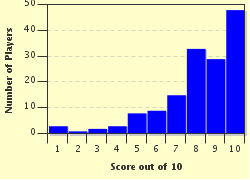Quiz Answer Key and Fun Facts
1. The year: CXXVIII. The event: The Romans finish the construction of a Wall that separated the Roman province of Britannia from Caledonia (ancient Scotland). Which Roman Emperor ordered the Wall to be built?
2. The year: MLXVI. Upon the death of Edward the Confessor, Harold Godwinson becomes King of England, but which event terminated his short reign in the same year?
3. The year: MCLIV. The event: King Stephen is dead and is succeeded by King Henry II. What dynasty did Henry II establish?
4. The year: MCCXV. The event: King John signs a document in order to appease the Church and the rebelling aristocracy. What was the name of the document (please give the Latin name and no article)?
5. The year: MCCCXIV. The battle: Bannockburn. The victor: Robert the Bruce. Can you supply the name of the defeated King of England?
6. The year: MCDXV. The battle: Agincourt. The victor: King Henry V of England. But, what weapon did the English have that greatly contributed to their victory?
7. The year: MCDLXXXVII. The war: Wars of the Roses. The victor: Henry VII. How is the battle named?
8. The year: MDLXXXVIII. The event: Defeat of the Spanish Armada. Who was the English commander who frustrated the Spanish plans for an invasion of England?
9. The year: MDCCVII. The event: one of the countries of what today is Great Britain agreed to unite with England. Which one?
10. The year: MDCCCXV. The battle: Waterloo. Defeated: Napoleon Bonaparte. What was the name of the victor?
Source: Author
DeepHistory
This quiz was reviewed by FunTrivia editor
bloomsby before going online.
Any errors found in FunTrivia content are routinely corrected through our feedback system.

